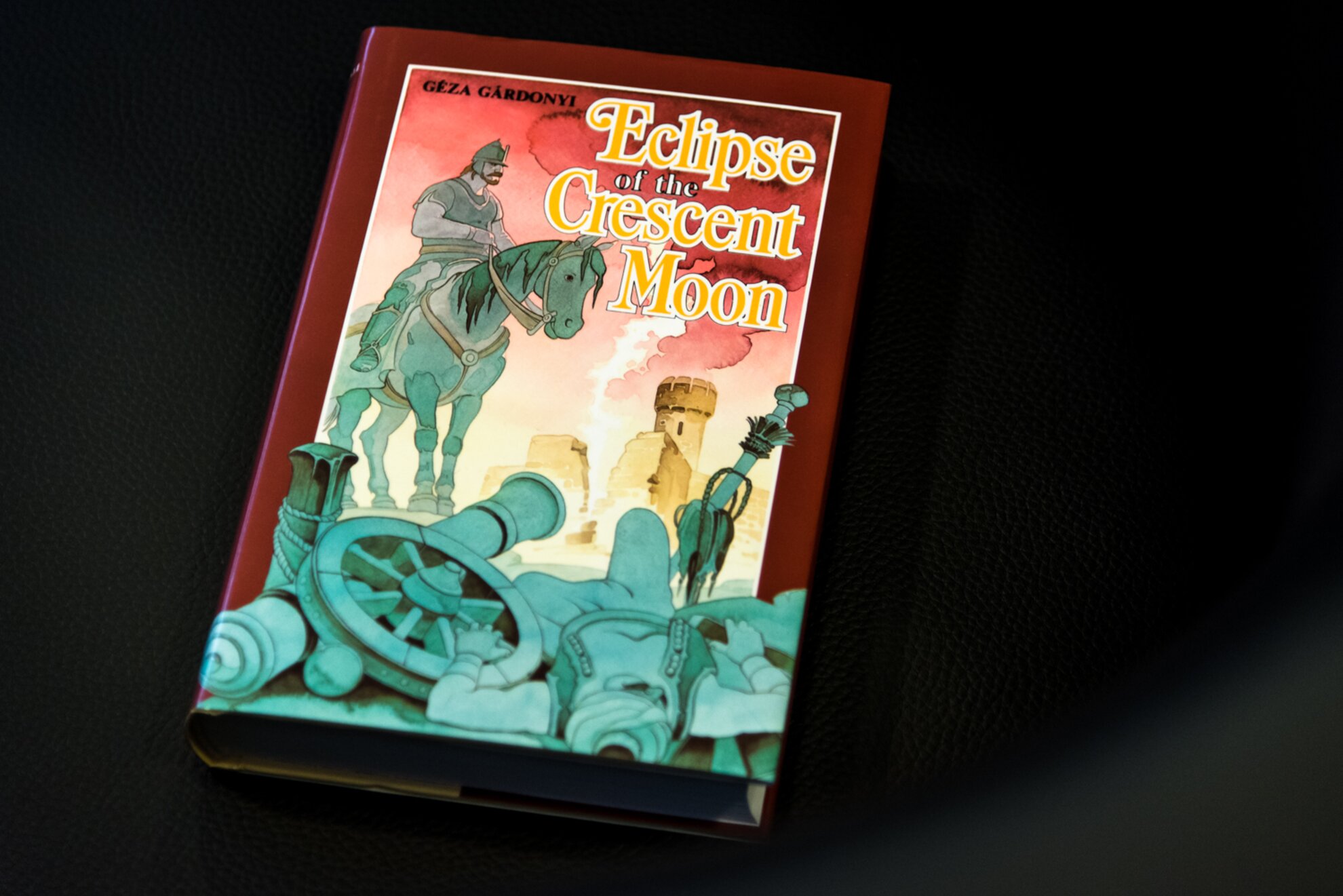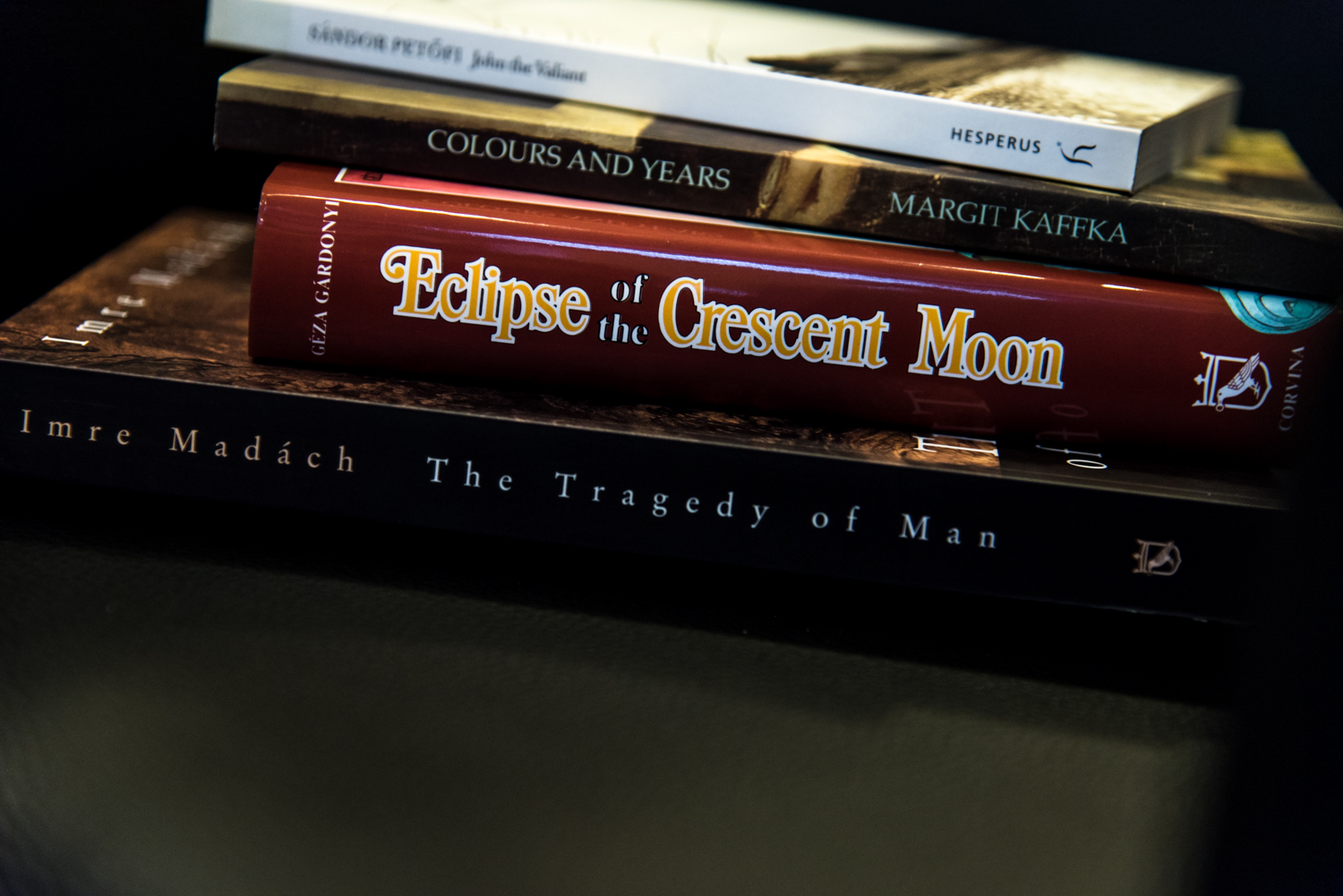Embers: Sándor MáraiAltough Sándor Márai wrote plays, essays, memoirs, newspaper articles, and novels, it was his prose that brought him critical acclaim – and Embers is truly his magnum opus. In this book, he presents a gripping story of suspense about a 75-year-old retired general from the Austrio-Hungarian army, named Henrik. He invites one of his childhood friends, Konrad – who disappeared 41 years ago under mysterious circumstances – over for dinner, but what really happens is that Henrik prosecutes him. As the plot develops, the alluring suspense grows, but Embers could not be labeled as historical crime fiction, at least not in the traditional sense. This is a lament over a long-lost civilisation, over self-knowledge and true nobility in the vein of Thomas Mann or Joseph Konrad. Márai has wonderful control of his prose, creating images that bring the world to life in strange and insightful ways. A must-read.Journey by Moonlight: Antal Szerb A major classic of 1930s literature, Antal Szerb’s Journey by Moonlight is the fantastically moving and darkly funny story of a bourgeois businessman torn between duty and desire. The plot follows a malcontent Hungarian businessman, Mihály, and his wife Erzsi on their honeymoon in Italy. When an “accidentally” missed train separates them, a marriage designed to seal Mihaly’s bourgeois existence comes apart. He ends up in a small town in the mountains and then in Rome, once again meeting key figures of his youth. Erszi ends up in Paris, where she struggles to find her own way in the face of temptation by her former husband and other suitors. Their lives move almost in parallel as they face unsettling revelations and encounters, spending dark, almost Gothic nights in strange places; each of them has to make a decision about their future. Luckily, Antal Szerb had both the brain and the heart to make a book as complex as charming, as ironic as playful. The characters will surely retain your sympathy and interest. It wouldn’t be an exaggeration to call Journey By Moonlight the Hungarian The Master and Margarita.Eclipse of the Crescent Moon: Géza Gárdonyi

Géza Gárdonyi’s most well-known book, a fanciful account of the true story of the 1552 siege of Eger castle, is without a doubt one of the most-loved Hungarian books of all time, and is compulsory reading in most of the country’s high schools. Luckily, the writer could find a balance between being informative, historically accurate, and at the same time adding enough depth to the characters while keeping things engaging. The primary hero of Eclipse Of The Cresent Moon is Gergely Bornemissza: the book starts with him at eight years old, and from there we learn about his life, his relationship with Éva (eventually his wife), their adult years, and in the end, the way Gergely and other defenders fought against the Turkish army to defend the Eger castle. Although Gárdonyi has a sharp eye for small details, and he succeeds in transporting the reader into another era, in the end it’s the Dumas-ish adventure book qualities that won’t let you put the book down until you’ve finished it.Colours and Years: Margit Kaffka

Margit Kaffka’s Colours And Years is considered one of the great works of 20th-century Hungarian fiction, as well as a significant work of feminist fiction. It’s strongly autobiographical, as it was based on the story of her mother’s life. The narrator, Magda, marries three times, and during these marriages she experiences how unskilled she is and how much she depends on choices made for her by men. That kind of strong and tragic narrative earned the writer comparisons to Honoré de Balzac and Émile Zola, and 20th-century female writers like Virginia Woolf. It might sound like a bleak and disillusioned read, but Margit’s rich characters and the relevation in the end makes Colours And Years a lighter read than it might seem.
The Adventures of Sinbad: Gyula Krúdy Gyula Krúdy wrote many fictional stories about his most famous character, an eloquent sensualist gentleman of Budapest society, between 1911 and 1917, and The Adventures Of Sinbad is the definitive collection of them. What distinguishes these writings is Krúdy’s unique style: blending nostalgia, fantasy, and irony. What connects the ethereal collection is that they are all centered around Sinbad, his travels, and his love life – but in some stories, he is young and upbeat; in others, he is dreaming; in one, he is a sprig of mistletoe. Affairs with all kinds of women follow each other, and between them, Sinbad sometimes wanders around in a graveyard, talks to his dead relatives in a crypt, sets sail, or enjoys a pint of beer. Each short story communicates various shades of attraction, desire, vanity, lust, and despair. They are poetry.
One-minute Stories: István Örkény

István Örkény is the master of grotesque, whose “one-minute stories” and absurd plays depict the predicaments of modern man with a keen sense of humor. The aformentioned one-minute stories became the writer’s trademark: “short, succinct, often shocking, grotesque, or absurd pieces, anecdotes, sometimes objets trouvés,” taken from newspapers or official notices and slightly twisted, stories that “encapsulate some of the absurdity of the age in a succinct and hilarious manner,” to quote Miklós Győrffy. You might say that the style is something that can be labeled as hit or miss, but nonetheless, Örkény’s works are worth a chance, as we are talking about one of the most unique Hungarian writers.The Tragedy of Man: Imre Madách

For years, Hungarian literary giant János Arany criticized The Tragedy of Man as a mere imitation of Goethe’s Faust, he later changed his mind and agreed that it’s one of the most important pieces of Hungarian literature. Madách’s main inspiration was the duality at the turn of the 1850s and 1860s: the end of the general despondency felt due to the failure of the 1848 Revolution and War of Independence, the start of the decade leading to the Compromise of 1867 and prosperity, and the writer’s disappointment in his wife – Eve’s character was inspired by her. The Tragedy of Man has 15 scenes, in which Madách leads us through the eyes of the lyrical hero Adam and his guide Lucifer as they visit the greatest moments of history, when the outstanding characters of mankind struggle with new ideas, usually facing decline and failure. The first three scenes and the conclusion provide a kind of Biblical framework. Although the tone alternates between optimism and pessimism, the book ends in an inspiring and uplifting way, and will surely leave you in awe.John the Valiant: Sándor Petőfi

Arguably the greatest and most popular poem in the Hungarian language, John the Valiant is Sandor Petőfi’s spirited folk epic, recounting the adventures of Johnny Grain-o’-corn, a young and ‘valiant’ shepherd boy. The plot is based on the Hungarian fairy tale tradition: the protagonist from an unfavorable start in life eventually gains a good existence as a reward for his virtuous deeds. To be more specific: Johhny Corn, found in a cornfield, falls in love with an orphan girl, Iluska, heads to France with a gang of hussars to fight the Turks, saves the French princess, makes it to the Land of Fairies, marries Iluska, and live happily even after. Thematically, Petőfi handles the Hungarian folk tradition from an urban-intellectual point of view, which gives the text an ironic hint that brings the 21st-century reader close to the world of the poem.The Paul Street Boys: Ferenc Molnár

The Paul Street Boys definitely belongs to classic youth literature with its timeless topic, exciting plot, and colorful characters. Every boy in this adventurous story personifies his dreams and is eager to realize them. The gripping events portray Hungarian youngsters whose battles and bonding on the playground carry the idea and aspiration of their homeland’s independence. At the time Ferenc Molnár wrote The Paul Street Boys, Cooper’s Indian war stories were extremely popular in Hungary, and there is the flavor of their morality in this book, writes Mátyás Sárközi, Molnár’s grandson. “There are examples of good cameraderie, loyalty, idealism, but Molnár always manages to save himself from being just a shade too sentimental. Like Mark Twain, he has the wit and the good writer’s sense to mix the grotesque with the pathetic.” A true world classic of its kind, The Paul Street Boys is a juvenile classic that has lost none of its magic.
The Baron’s Sons: Mór JókaiMór Jókai’s writing combines limitless imagination, brilliant storytelling, vivid plots, unforgettably suggestive characters, heartfelt pathos, and serene humor. His novel, The Baron’s Sons (or The Heartless Man’s Sons), takes place in the whirlwind of events of the Hungarian revolution and war of independence in 1848-49, and depicts the battles fought for national independence through the life of the Hungarian Baradlay Family, and people who are in contact with them. The novel gives a pictorial description of battles, gatherings, crowd scenes, and crucial moments of the revolution, presenting the gigantic fight of the nation with suggestive power.In Budapest, English versions of these books are available at the following shops:
- Libra Bookshop: Budapest 1085, Kölcsey utca 2
- Libri Book Palace: Budapest 1072, Rákóczi út 12
- Bestsellers: Budapest 1051, Október 6. utca 11




